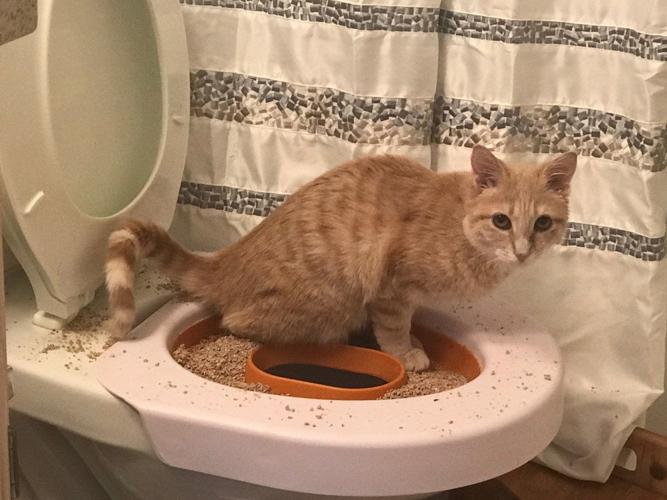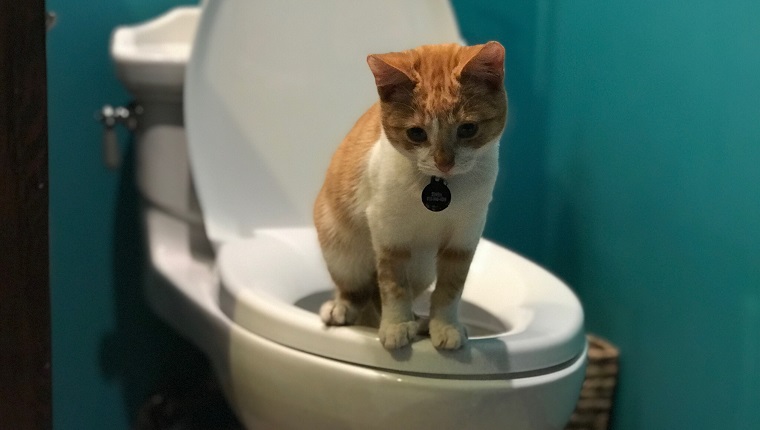What're your thoughts and feelings on How to Dispose of Cat Poop and Litter Without Plastic Bags?

Introduction
As pet cat proprietors, it's necessary to bear in mind how we get rid of our feline close friends' waste. While it may seem practical to flush pet cat poop down the commode, this technique can have damaging repercussions for both the environment and human health and wellness.
Alternatives to Flushing
The good news is, there are much safer and extra liable means to throw away cat poop. Take into consideration the adhering to choices:
1. Scoop and Dispose in Trash
The most typical method of getting rid of feline poop is to scoop it right into a biodegradable bag and toss it in the trash. Make certain to use a committed trash inside story and throw away the waste quickly.
2. Usage Biodegradable Litter
Opt for naturally degradable cat trash made from products such as corn or wheat. These litters are eco-friendly and can be safely thrown away in the trash.
3. Bury in the Yard
If you have a yard, take into consideration burying feline waste in a marked area away from veggie gardens and water sources. Make certain to dig deep enough to avoid contamination of groundwater.
4. Mount a Pet Waste Disposal System
Buy an animal garbage disposal system specifically created for pet cat waste. These systems utilize enzymes to break down the waste, lowering smell and ecological effect.
Wellness Risks
In addition to ecological worries, flushing feline waste can also present health and wellness dangers to humans. Feline feces may have Toxoplasma gondii, a bloodsucker that can create toxoplasmosis-- a potentially extreme health problem, particularly for expecting females and individuals with damaged immune systems.
Environmental Impact
Purging cat poop introduces unsafe virus and bloodsuckers right into the water supply, positioning a significant threat to aquatic ecological communities. These contaminants can negatively impact marine life and compromise water high quality.
Final thought
Accountable animal ownership prolongs beyond supplying food and sanctuary-- it additionally involves appropriate waste monitoring. By refraining from flushing cat poop down the commode and opting for alternative disposal methods, we can lessen our environmental footprint and shield human wellness.
Why Can’t I Flush Cat Poop?
It Spreads a Parasite
Cats are frequently infected with a parasite called toxoplasma gondii. The parasite causes an infection called toxoplasmosis. It is usually harmless to cats. The parasite only uses cat poop as a host for its eggs. Otherwise, the cat’s immune system usually keeps the infection at low enough levels to maintain its own health. But it does not stop the develop of eggs. These eggs are tiny and surprisingly tough. They may survive for a year before they begin to grow. But that’s the problem.
Our wastewater system is not designed to deal with toxoplasmosis eggs. Instead, most eggs will flush from your toilet into sewers and wastewater management plants. After the sewage is treated for many other harmful things in it, it is typically released into local rivers, lakes, or oceans. Here, the toxoplasmosis eggs can find new hosts, including starfish, crabs, otters, and many other wildlife. For many, this is a significant risk to their health. Toxoplasmosis can also end up infecting water sources that are important for agriculture, which means our deer, pigs, and sheep can get infected too.
Is There Risk to Humans?
There can be a risk to human life from flushing cat poop down the toilet. If you do so, the parasites from your cat’s poop can end up in shellfish, game animals, or livestock. If this meat is then served raw or undercooked, the people who eat it can get sick.
In fact, according to the CDC, 40 million people in the United States are infected with toxoplasma gondii. They get it from exposure to infected seafood, or from some kind of cat poop contamination, like drinking from a stream that is contaminated or touching anything that has come into contact with cat poop. That includes just cleaning a cat litter box.
Most people who get infected with these parasites will not develop any symptoms. However, for pregnant women or for those with compromised immune systems, the parasite can cause severe health problems.
How to Handle Cat Poop
The best way to handle cat poop is actually to clean the box more often. The eggs that the parasite sheds will not become active until one to five days after the cat poops. That means that if you clean daily, you’re much less likely to come into direct contact with infectious eggs.
That said, always dispose of cat poop in the garbage and not down the toilet. Wash your hands before and after you clean the litter box, and bring the bag of poop right outside to your garbage bins.
https://trenchlesssolutionsusa.com/why-cant-i-flush-cat-poop/

We had been shown that write-up about Can You Flush Cat Poop Down The Toilet? through someone on a different web page. In case you enjoyed reading our page if you please remember to share it. Kudos for your time. Don't hesitate to pay a visit to our site back soon.
Click Here
Comments on “Why Flushing Cat Poop Down Your Toilet Isn't a Good Idea - Tips for Safer Handling”